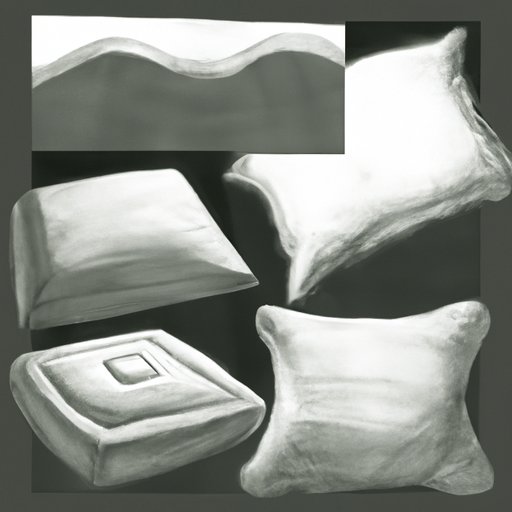Introduction
Drawing a pillow can be a fun and creative activity for all ages. Whether you are a beginner artist or an experienced illustrator, learning how to draw a pillow is both accessible and rewarding. In this article, we will explore the basics of pillow drawing from simple shapes to realistic illustrations. We will also provide helpful tips and examples for each step of the process.
Step-by-Step Guide: How to Draw a Pillow
Before you start drawing a pillow, it is important to gather the materials and tools you need. You will need a pencil, an eraser, paper, and a ruler. Once you have these items ready, you can begin by sketching out the basic shapes of your pillow.
Drawing a Pillow Using Basic Shapes
One of the easiest ways to draw a pillow is by using basic shapes. Start by drawing a large oval or circle shape as the base of the pillow. Then, draw two smaller ovals or circles on either side. This will create the contours of the pillow. Next, add details such as stitching, buttons, and other features to make the pillow look more realistic. Finally, erase any unnecessary lines and refine your drawing.
When creating a three dimensional look for your pillow, use different shades of gray to create shadows and highlights. Start by lightly shading the center of the pillow and then gradually darken the edges to create a shadow effect. You can also add highlights to the pillow by lightly shading the edges of the pillow with a white colored pencil.
Here are some examples of simple pillow drawings created using basic shapes:


A Tutorial on Creating a Realistic Pillow Illustration
Creating a realistic pillow illustration is a bit more complex than just drawing basic shapes. To achieve a more professional result, you must understand the basics of shading and texture. Start by lightly shading the center of the pillow and then gradually darken the edges to create a shadow effect. Then, use hatching and crosshatching techniques to add texture to the pillow. Finally, use light shading to add highlights and shadows to the drawing.
Here are some examples of realistic pillow illustrations created using shading and texture:


Learn to Draw a Pillow in 10 Easy Steps
For a quick and easy tutorial on how to draw a pillow, follow these 10 steps:
- Start with a basic oval shape.
- Add two smaller ovals on either side to create the contours of the pillow.
- Draw details such as stitching and buttons.
- Erase any unnecessary lines.
- Use different shades of gray to create shadows and highlights.
- Use hatching and crosshatching techniques to add texture to the pillow.
- Lightly shade the edges of the pillow to add highlights.
- Darken the edges of the pillow to create a shadow effect.
- Add finishing touches such as tassels and frills.
- Refine your drawing until you are satisfied with the result.

How to Draw a Pillow from Scratch for Beginners
If you are a beginner artist, here is an easy tutorial on how to draw a pillow from scratch:
- Start with a basic oval shape.
- Draw the contours of the pillow by adding two smaller ovals on either side.
- Use shading to add depth and texture to the pillow.
- Add highlights and shadows by lightly shading the edges of the pillow.
- Draw details such as stitching and buttons.
- Erase any unnecessary lines.
- Add the finishing touches such as tassels and frills.
- Refine your drawing until you are satisfied with the result.
Conclusion
Drawing a pillow can be a fun and creative activity for all ages. In this article, we explored the basics of pillow drawing from simple shapes to realistic illustrations. We also provided helpful tips and examples for each step of the process. With practice and patience, you can learn to draw a pillow from scratch and create beautiful illustrations.
If you want to further improve your skills, try experimenting with different shapes, textures, and colors. You can also practice drawing pillows from different angles and perspectives. With enough practice, you will be able to draw a pillow with ease and confidence.


